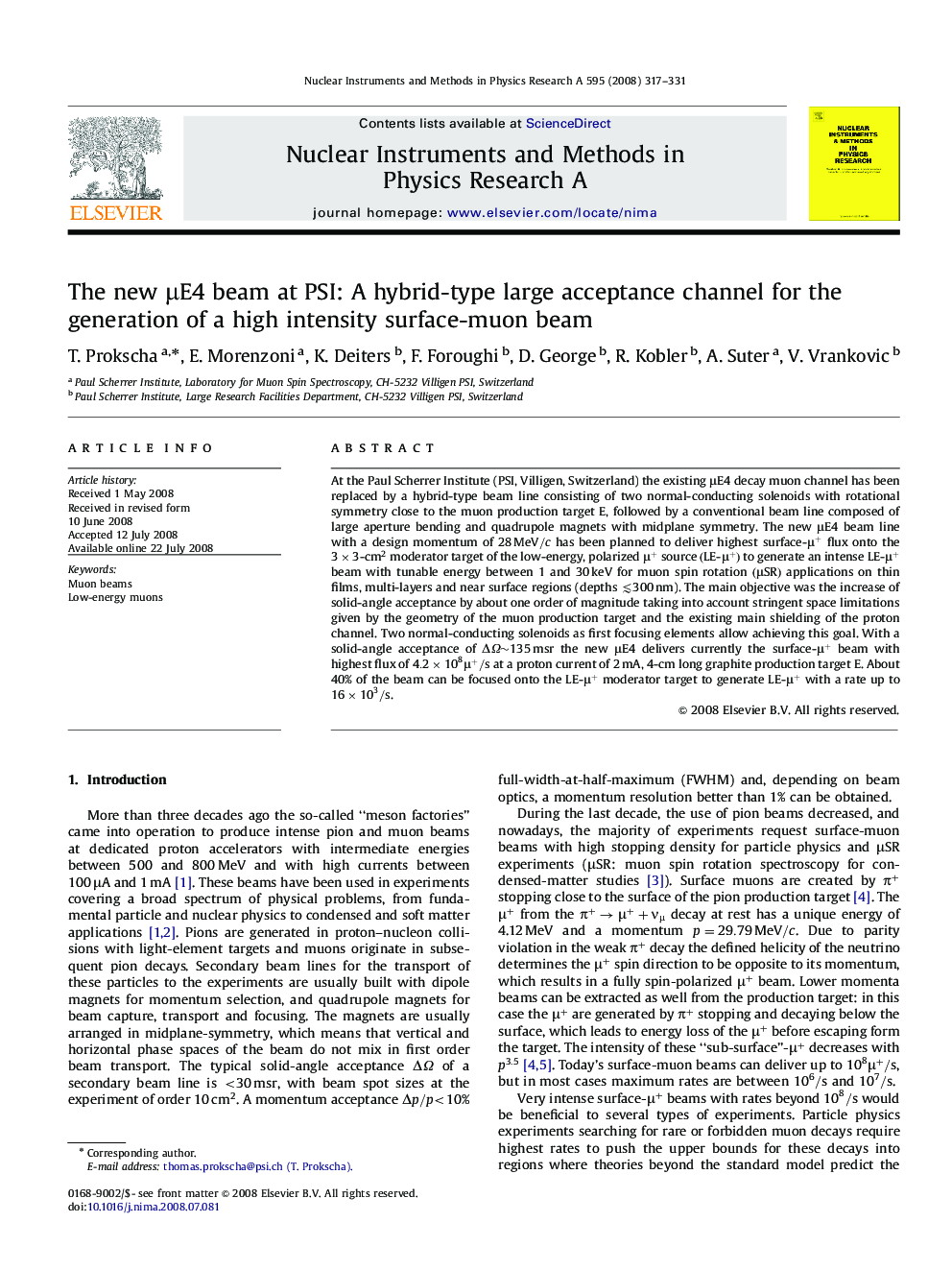| Article ID | Journal | Published Year | Pages | File Type |
|---|---|---|---|---|
| 1830449 | Nuclear Instruments and Methods in Physics Research Section A: Accelerators, Spectrometers, Detectors and Associated Equipment | 2008 | 15 Pages |
At the Paul Scherrer Institute (PSI, Villigen, Switzerland) the existing μE4μE4 decay muon channel has been replaced by a hybrid-type beam line consisting of two normal-conducting solenoids with rotational symmetry close to the muon production target E, followed by a conventional beam line composed of large aperture bending and quadrupole magnets with midplane symmetry. The new μE4μE4 beam line with a design momentum of 28MeV/c has been planned to deliver highest surface-μ+μ+ flux onto the 3×3-cm23×3-cm2 moderator target of the low-energy, polarized μ+μ+ source (LE-μ+)(LE-μ+) to generate an intense LE-μ+μ+ beam with tunable energy between 1 and 30 keV for muon spin rotation (μSR)(μSR) applications on thin films, multi-layers and near surface regions (depths ≲300nm). The main objective was the increase of solid-angle acceptance by about one order of magnitude taking into account stringent space limitations given by the geometry of the muon production target and the existing main shielding of the proton channel. Two normal-conducting solenoids as first focusing elements allow achieving this goal. With a solid-angle acceptance of ΔΩ∼135msr the new μE4μE4 delivers currently the surface-μ+μ+ beam with highest flux of 4.2×108μ+/s4.2×108μ+/s at a proton current of 2 mA, 4-cm long graphite production target E. About 40% of the beam can be focused onto the LE-μ+μ+ moderator target to generate LE-μ+μ+ with a rate up to 16×103/s16×103/s.
